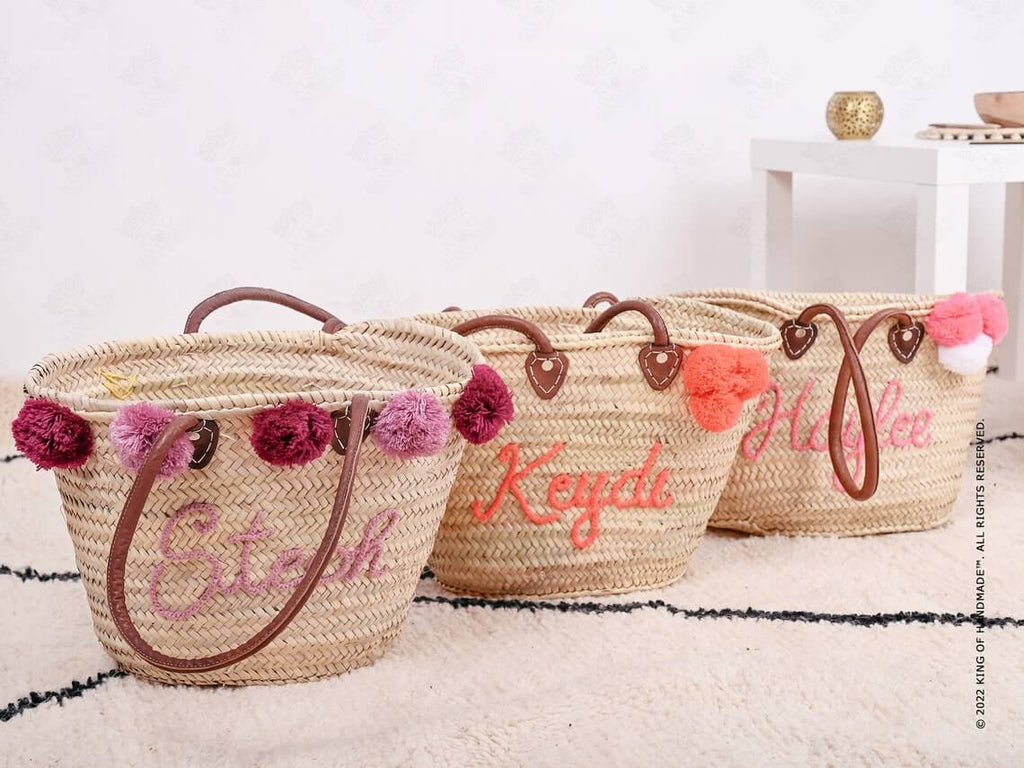Straw Bags: Step-by-Step
Posted by KING OF HANDMADE

Straw baskets have been used for over ten thousand years, functioning both as vessels for carrying items and fashionable accessories. Every culture has its own instruction manual for creating traditional straw baskets. Here is the step-by-step guide to how Moroccan straw baskets are woven.
Step 1: Collecting the Materials
Moroccan baskets are weaved from the leaves of the doum palm. The doum palm is found from the Sahel to the Arabian Peninsula, notable for its edible date fruits. The doum leaves are collected simultaneously with the dates.
Some baskets are made from sisal, a stiff, flowering plant native to Mexico that is widely cultivated around the world. Alternatively, basket weavers can use reed or alfa grass. With alfa grass, the grass is first woven into the strips, then the strips are woven into the basket.
The leather for your basket handles comes from the hides of cow, sheep, goats, and other livestock in Morocco. Morocco is famed for its tanneries which process and prepare leather through traditional means and avoiding machinery and modern techniques. The process to tan and dye leather takes several weeks.
Some baskets are adorned with wool, sheared from sheep. Sometimes, natural dyes will be used to give the wool different hues.
Step 2: Weaving the Basket
Moroccan baskets are woven in hand, a task traditionally performed by men. However, basket weaving came to be delegated to women, though both genders alike will weave straw baskets today.
All of this weaving is all done by hand, without use of machinery or even tools, according to the same practices that have been used for thousands of years. This also means that every Moroccan straw basket you see is unique in its own way.
Weaving techniques and pattern vary regionally. But no matter the origin, they all can be found in the markets of major cities like Marrakesh and Rabat and sometimes they are even shipped around the world.
Step 3: Cleaning
Once the straw basket is fully woven, it is washed and dried. This is to make sure it’s all clean. The baskets are stored together to await the next step.
Step 4: Customization
The straw basket has been woven, but it’s not yet fully assembled. Now we must add the straps, accessories, and any custom designs.
All of the straps are sewn on by hand by talented craftsmen. The same is true for the wool you will find attached your basket such as wool pompoms and embroidered wool designs like shapes and names.
Step 5: Delivery
After everything is attached and the basket undergoes a quality inspection, it’s promptly delivered right to your door! Your basket traveled a long journey to get to you, and it will be prepared for many more with you. Moroccan baskets are made to last, crafted by hand and following ancient techniques. We hope you will enjoy your straw basket.